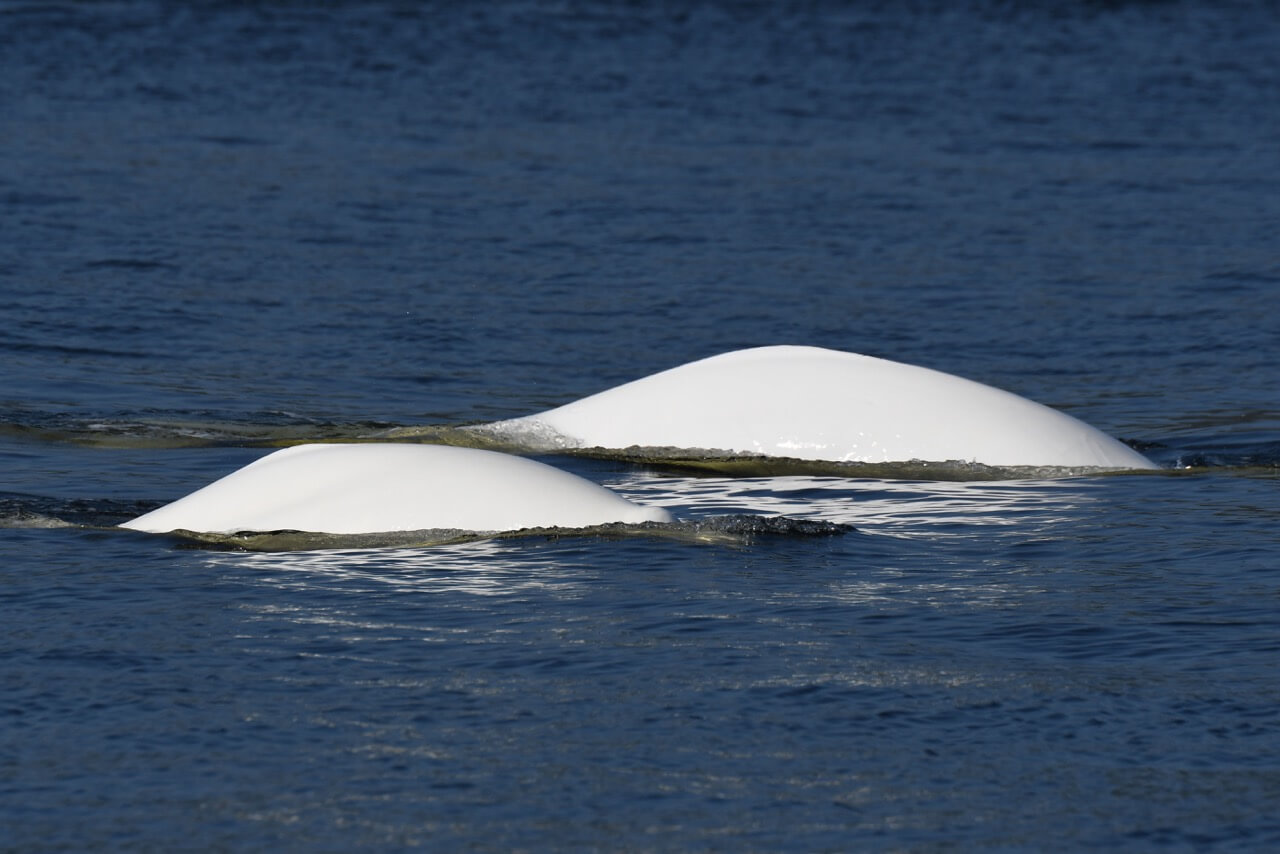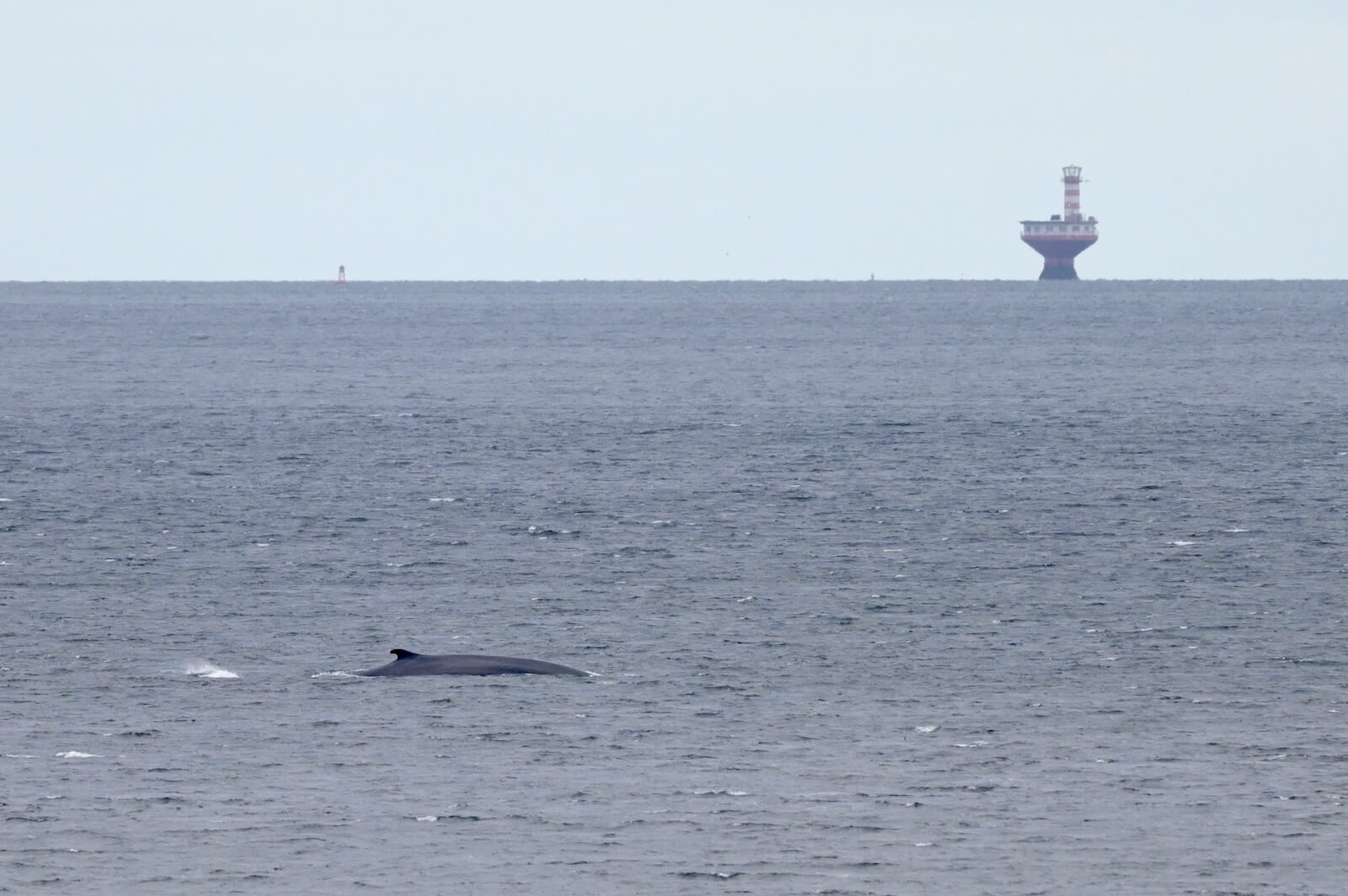This week, a humpback whale and a fin whale have been moving through the estuary while the white backs of belugas glisten in the sunlight. Despite the grey skies, observers also spotted harbour seals resting on the rocks. The powerful blasts of humpback whales as well as harbour porpoises were reported from Gaspé Bay.
Waiting with the belugas
On Monday afternoon, a resident of Saint-Irénée was scanning the river while she was on hold on the phone. Imagine her surprise when she spotted two belugas close to shore! They were later followed by groups of four to six individuals, for a total of about a dozen belugas. Talk about combining business with pleasure!
White whales were also scattered farther east in the St. Lawrence as well as in the Saguenay Fjord. One naturalist comments on their presence on November 27: “Belugas in the mouth just now! We could clearly see their little spouts through the sun’s reflection on the water.” In Les Escoumins, North Shore residents have been seeing harbour seals and several belugas. As the only cetacean to reside in the St. Lawrence year-round, belugas are well adapted to survive our cold winters! They have a thick coat of blubber that helps them retain their body heat, as well as a ridge instead of a dorsal fin, which reduces heat loss, enhances manoeuvrability and allows them to break through the ice cover.
Serendipity along the coasts
Luck was on one wildlife photographer’s side during one of his observation sessions. He gets a little emotional when he describes the moment he first catches glimpse of a whale. “All of a sudden, I see in my binoculars a humpback whale, and it really wasn’t that far away! I let out a shout, my heart begins to pound, I admire and snap a few photos of the individual, which after 5 breaths dives while timidly showing its tail between the waves.” He also reports the presence of a fin whale in the area as well as a minke whale.
From a hiking trail, a local woman also had the opportunity to admire a few marine mammals in Gaspé Bay. “Two humpbacks, including one that was swimming parallel to the coast from which I was observing it. We could see it quite well with our naked eyes and its spout was so powerful! I also saw this one’s tail.” Offshore, about ten harbour porpoises were also on the move. This time of the year, these small cetaceans are increasingly uncommon, as most of them start heading for their wintering grounds in October. Where are they going? Their migration is still somewhat of an enigma, but they are undoubtedly moving toward ice-free waters.
Thanks to all our collaborators!
Special thanks go out to all our observers who share their love for marine mammals with us! Your encounters with cetaceans and pinnipeds are always a pleasure to read and discover.
On the water or from shore, it is your eyes that give life to this column.
Odélie Brouillette
Marie-André Charlebois
Laetitia Desbordes
Jade-Audrey Lavergne
Diane Ostiguy
Renaud Pintiaux
Élizabeth Melis
Andréanne Sylvain
Marielle Vanasse
And to all the others!
Additionally, we would like to acknowledge the following teams that also share their sightings:
Sept-Îles Research and Education Centre (CERSI)
Group for Research and Education on Marine Mammals (GREMM)
Marine Mammal Observation Network (MMON)
Quebec Marine Mammal Emergency Response Network (QMMERN)
Mingan Island Cetacean Study (MICS)
Would you also like to share your observations?
Have you seen any marine mammals in the St. Lawrence? Whether it’s a spout offshore or just a couple of seals, drop us a line and send your photos to [email protected]!









